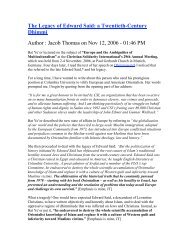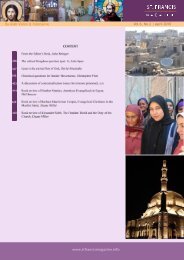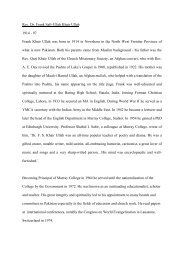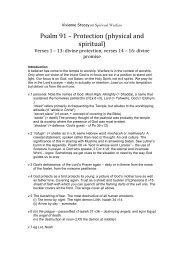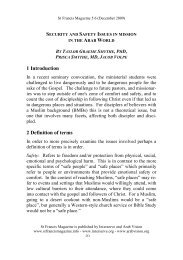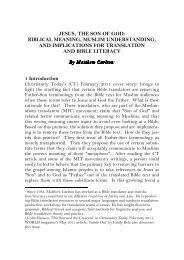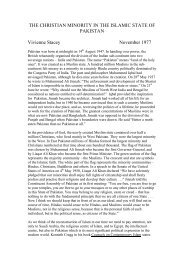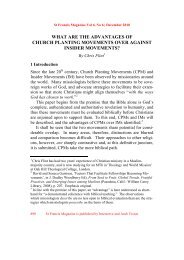Untitled - St.Francis Magazine
Untitled - St.Francis Magazine
Untitled - St.Francis Magazine
You also want an ePaper? Increase the reach of your titles
YUMPU automatically turns print PDFs into web optimized ePapers that Google loves.
<strong>St</strong> <strong>Francis</strong> <strong>Magazine</strong> Vol 8, No 2 | April 2012 ...the Balqa was the territory of the two largest Jordanian tribal federations, the Adwan and the Beni Sakhr. Travellers mentioned them often, and many a trip had to be cancelled as they were unable to acquire safe-‐conduct in the different districts. The Adwan were semi-‐settled Bedouin who were chiefs of the tribal federation that included all the settled and semi-‐settled people of the Balqa. They spent winter in the cultivated lands and pastures of the Jordan Valley, and moved upwards into the plateau west and north of Amman in summer. Their paramount chiefs were (during the 19 th century) the Salih clan headed by Sheikh Dhiab and his son, Ali elDhiab. However, they had to contend all the time with their cousins the Nimr clan headed by Sheikh Gublan and his family… Gublan was usually the chief who arranged the protection needed. (49) Wheat was a basic crop for the whole community. This necessitated those who were not farmers themselves, mostly the nomadic bedouin but then, increasingly, merchants from Nablus and Jerusalem as these cities expanded, to have a place where trading could take place. The ancient town of EsSalt was ideal for this purpose, for it lay strategically between the fertile wheat fields of Moab and the Jordan River crossing at Damieh which led directly to the administrative centre of the whole Balqa sanjuk established at Nablus. With an Ottoman administration centre established at EsSalt in 1867, the authorities were able to create a more effective taxation collection system, and take pre-‐emptive action against the traditional, perhaps arbitrary, authority of bedouin groups. This, in turn, encouraged the movement of farmers from other parts to come and establish themselves on the abundant land that as yet lay unworked across the western parts of Transjordan. Thus came Christians from the Nablus area, others from the Hauran areas south of Damascus, others north from Egypt, and even Circassian farmers who were brought by the authorities to settle around Amman from 1878. A similar development of settlements was taking place in the more northerly sanjuk of the Hawran which, being closer to Damascus, 299


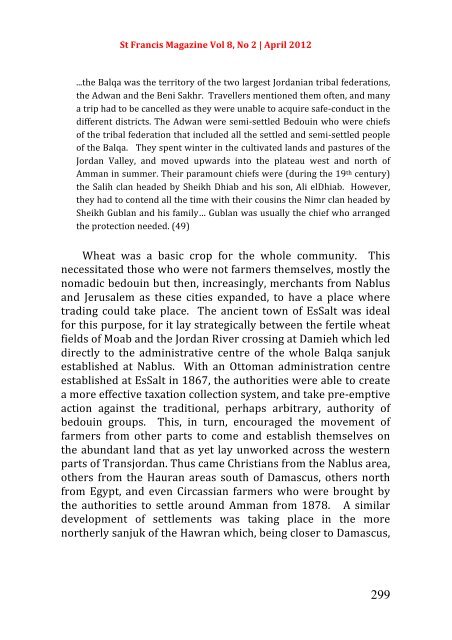

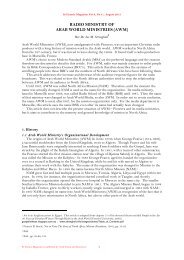
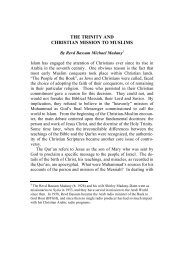
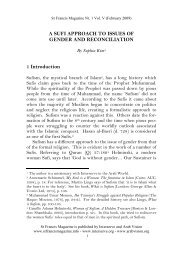
![Reflections on Surah Fatiha and the Lord's Prayer[1] - St.Francis ...](https://img.yumpu.com/49377951/1/184x260/reflections-on-surah-fatiha-and-the-lords-prayer1-stfrancis-.jpg?quality=85)
